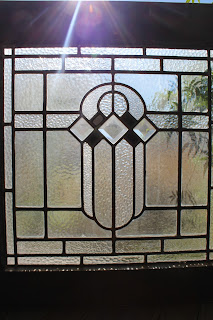Tuesday, November 29, 2022
Touch Polysynth
Thursday, September 1, 2022
Memory loss prototyping
I wasnt satisfied with the function of the switches on the first prototype, so I did some more breadboarding and settled on these two switch functions.
Switch one simply removes the power filtering capacitor that almost every audio device has the to keep the voltage steady and clean. The pedal needs to be powered seperatlely (no daisy chaining) in order for this to have effect because noise will be filtered by other effects which undoubtebly contain power filtering capacitors. This switch just makes it a lot more glitchy and noisy which is what i intended to do but i think its nice to be able to flick the switch and clean it up.
Switch two selects whether the audio signal feeding the delay chip comes directly from the audio amp (386) or primarily though negative ground via a capacitor. These two circuit confogurations have unique sound palattes, one a layered distortion with thick full sound as well as hf radio fuzz when you roll back guitar tone controls. The other is quieter, cleaner, freindlier sounding, with popping glitches that I liked from the old video and has the same sort of low cut treble boosting tone as the original.
The knobs are all the same as from previous versions. I still need to make a layout and description for each one.
I found that i got better noise and glitching without the grounded case acting as a faraday cage so on the third version I've added a switched jack for a noise antenna. The antenna is a loop of wire, a few inches long with a 1/4 " plug. I have to use a plastic insulated jack so it doesnt short out onto the enclosure. The antenna works conjuct to the impedance and gain knobs for tuning in noises. By moving your body around the antenna you can incite effects as well. When no antenna is present the signal passes on unimpeded with less noise.
ML222
When i made up the Memory loss pcbs I ordered I came across some strange behaviour with some of them which I determined the causes of and by exagerated them to incorporate it into the final design. Something I'd mused on for a while was heterodyning effects and synthesizers.
The best examples of this that I've found is the Ciat Lonbarde dogvoice and rollz with ultrasound. Paradoxical oscilators spiralling into high frequencies are translated by a switched capacitor filter. https://ciat-lonbarde.net/ciat-lonbarde/rollz5/index.html
A high gain operational amplifier can pick up local radio stations. This guy seems to have stumbled onto the same anomally https://www.edn.com/create-radio-receiver-circuits-with-the-lm386-audio-amplifier/
It tends to latch onto them and oscilate at the strongest frequency in the prefered range.
The pt2399 shift register runs at a similar 3-4 mhz frequency so the preamp can be heterodyned with the delay chip making the chaotic radio noise audible and reactive to the input signal.
Monday, March 14, 2022
Tonecoder-sharktooth
A novel effects box
Tuning my instrument to the room light (carrier frequency) gave a nice tonal resonance with interesting sideband frequencies. This is essentially fm resynthesis, with the modulator set at fixed frequency.
The pt2399 has a VCO input, so to make a tunable arangement of this you can insert an oscillator directly to modulate the signal.
 The PT2399 circuit give great depth of modulation and clean sound with some compression. Its still a touch noisy from the internal clock aliasing the modulation oscillator.
The PT2399 circuit give great depth of modulation and clean sound with some compression. Its still a touch noisy from the internal clock aliasing the modulation oscillator. 







